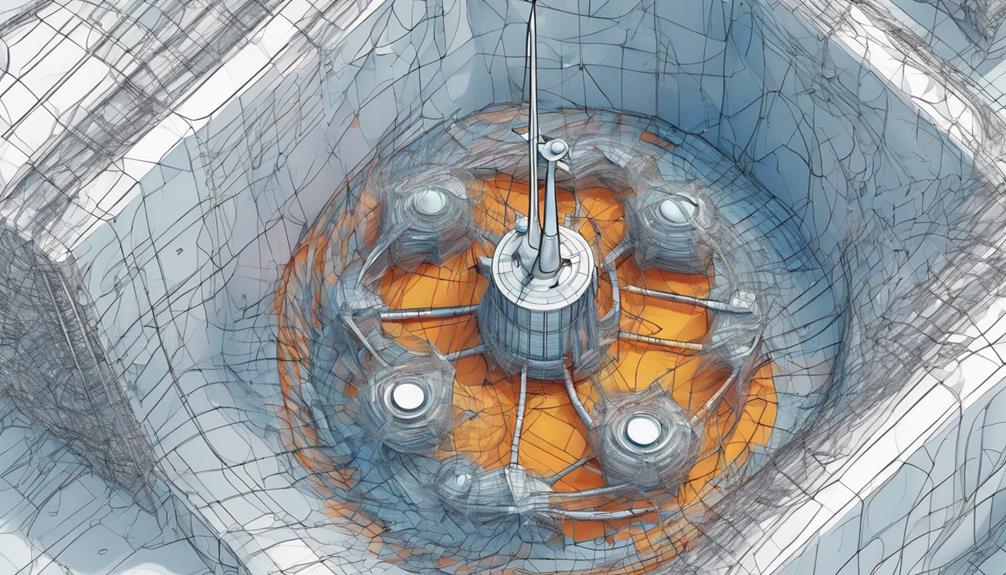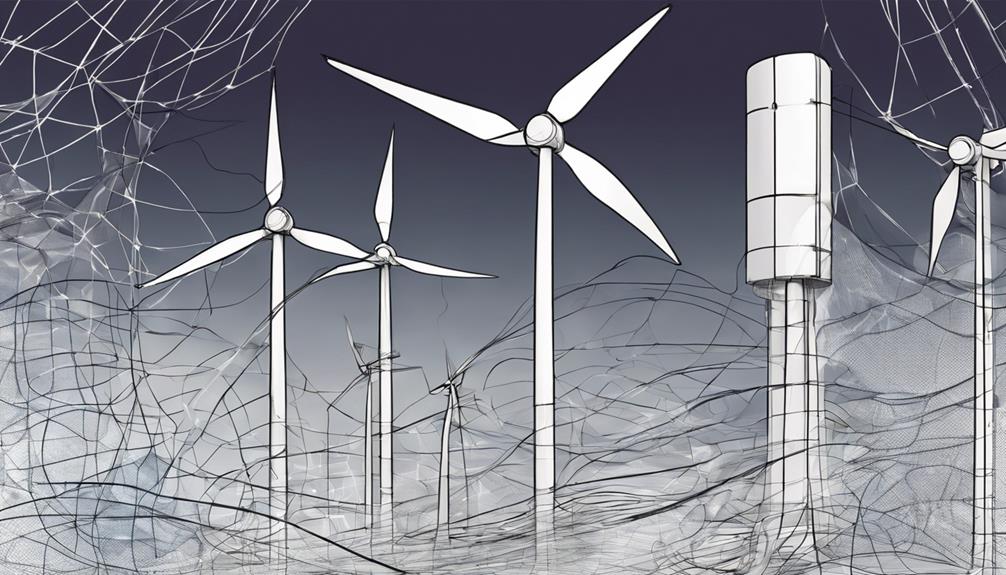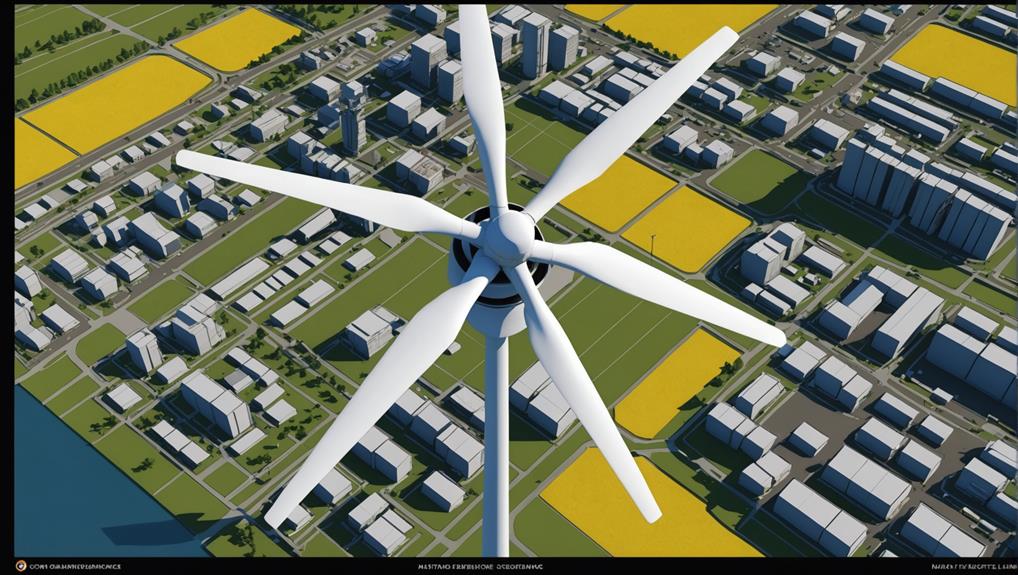To boost wind turbine performance, utilize ANSYS for CFD analysis. Optimize blade design, material, and aerodynamics factors with ANSYS tools. Consider blade shape, size, material, wind speed, and rotor speed for efficiency. ANSYS Fluent aids in simulating wind turbine flow fields. Visualize velocity and pressure fields for insights into power generation. Engineers use CFD to refine design configurations. ANSYS streamlines wind turbine optimization for clean energy solutions. Mastering ANSYS for CFD analysis is crucial to access the full potential of your wind turbine.
Key Takeaways
- ANSYS Fluent simulates wind turbine flow fields accurately.
- Consider blade design, material, and aerodynamics in analysis.
- Use periodic boundary conditions for multiple blade simulations.
- Analyze velocity and pressure fields to assess aerodynamic performance.
- Optimize wind turbine efficiency and power generation with CFD simulations.
Problem Specification
When setting up a computational fluid dynamics (CFD) analysis of a wind turbine, the problem specification involves defining parameters and conditions to accurately model the flow around the rotor.
In this simulation, the hub is often neglected as it has minimal impact on power generation. Typically, only one blade is considered, with periodic boundary conditions utilized to replicate the effects of multiple blades.
The primary objective is to acquire velocity and pressure fields around the blade to assess the aerodynamic performance of the rotor. By focusing on the flow field analysis, the simulation aims to determine the power generated by the rotor.
To achieve this, specific parameters and conditions are meticulously set to guarantee a precise and detailed representation of the flow around the wind turbine rotor using advanced CFD techniques.
This meticulous process is essential for gaining valuable insights into the aerodynamic behavior and performance of the wind turbine system.
Wind Turbine Design

To optimize wind turbine performance and efficiency, careful consideration of blade design, material selection, and aerodynamic factors is essential. Using Ansys for computational fluid dynamics (CFD) analysis can greatly aid in refining wind turbine designs to maximize power generation. Factors such as blade shape, size, and material play a crucial role in the overall efficiency of a wind turbine. Additionally, analyzing variables like wind speed, air density, and rotor speed is vital in determining the power output of the turbine. Design variations between horizontal axis wind turbines (HAWT) and vertical axis wind turbines (VAWT) require specific considerations to enhance performance. CFD simulations using Ansys allow for the evaluation of different design configurations to optimize energy output and overall turbine efficiency.
| Consideration | Importance | Ansys Utilization |
|---|---|---|
| Blade Design | High | CFD simulations for optimization |
| Material Selection | Critical | Stress analysis for durability |
| Aerodynamic Factors | Essential | Flow visualization for efficiency |
CFD Analysis Overview

Utilizing CFD analysis in ANSYS enhances the understanding of fluid flow dynamics around wind turbine components. This powerful tool allows engineers to simulate and analyze the flow around wind turbine blades, aiding in the optimization of design for improved performance and efficiency.
ANSYS Fluent, a part of the ANSYS suite, offers a robust platform for solving intricate fluid flow problems related to wind turbine aerodynamics. Through CFD simulations in ANSYS, engineers can visually examine velocity and pressure fields around wind turbine blades, providing valuable insights into the aerodynamic behavior of the components.
Additionally, CFD analysis with ANSYS plays a pivotal role in determining the power generated by wind turbines and optimizing their overall operation. By leveraging ANSYS for CFD analysis, engineers can enhance the performance and efficiency of wind turbines, contributing to the advancement of sustainable power plants.
Author Information

In relation to the discussion on CFD analysis overview, the author of the article on using ANSYS for CFD analysis of a wind turbine is associated with the Electrical Engineering department at the University of Al Azhar Indonesia in Jakarta, Indonesia. The research conducted by the author focuses on optimizing wind turbine design using Computational Fluid Dynamics (CFD) to enhance electricity generation from renewable resources. To inquire further about the study or obtain the journal article in print format, you can reach out to the author via email at putri.wulandari@uai.ac.id.
| Author's Affiliation | Research Focus | Contact Information |
|---|---|---|
| Electrical Engineering department, University of Al Azhar Indonesia, Jakarta, Indonesia | Optimization of wind turbine design using CFD for efficient electricity generation | Email: putri.wulandari@uai.ac.id |
Abstract

Efficiency in wind turbine design optimization is key to enhancing renewable energy generation using Computational Fluid Dynamics (CFD) analysis. With the increasing importance of Renewable Energy Resources, wind turbines have become vital for sustainable power generation.
Leveraging innovative solutions like Vertical Axis Wind Turbines (VAWT) on bridges and toll roads where wind speeds are favorable presents a unique opportunity for electricity generation. Computational Fluid Dynamics (CFD) is instrumental in refining wind turbine designs, especially for overcoming challenges faced by Horizontal Axis Wind Turbines due to space constraints.
Ansys software stands out as a powerful tool for conducting detailed CFD analysis of wind turbines, aiding engineers in developing efficient and sustainable renewable energy solutions. By utilizing CFD simulations, engineers can optimize the performance and efficiency of wind turbines, contributing significantly to the advancement of renewable energy technologies and the global shift towards cleaner energy sources.
Frequently Asked Questions
Is Ansys Used for Cfd?
Yes, Ansys is commonly used for CFD simulations. It provides advanced capabilities to analyze fluid flow phenomena accurately. Engineers benefit from its features to optimize designs and predict performance. Ansys is a powerful tool for CFD studies.
What Is CFD Wind Turbine?
Imagine exploring the intricate dance of air around wind turbines. CFD wind turbine analysis explores airflow dynamics, optimizing blade design, nacelles, and more. Engineers employ CFD to boost efficiency and power generation, enhancing performance greatly.
What Is the Difference Between Ansys Fluent and Cfd?
Ansys Fluent is a specific tool within the broader field of CFD. It offers advanced capabilities for simulating fluid flow and heat transfer. Understanding the differences helps in choosing the right tool for wind turbine analysis.
Which Type of Analysis Can Be Done Using Ansys Fluent?
You can perform various types of analysis using Ansys Fluent, such as steady-state and transient simulations, aerodynamic performance evaluation, pressure and velocity calculations, flow separation investigation, and optimization for different wind conditions.
Can ANSYS be Used to Analyze the Performance of Wind Turbines with More Blades?
Yes, ANSYS can be used to analyze the performance of wind turbines with more blades. The software’s advanced simulation capabilities allow engineers to study how different blade configurations affect energy production and structural integrity. This is why more blades excels in optimizing turbine performance and efficiency.
Conclusion
So there you have it – you've now mastered the art of using ANSYS for CFD analysis of a wind turbine. Congratulations, you're officially a virtual wind whisperer.
Now go forth and conquer the windy world with your newfound CFD skills. And remember, the sky's the limit (literally)!










